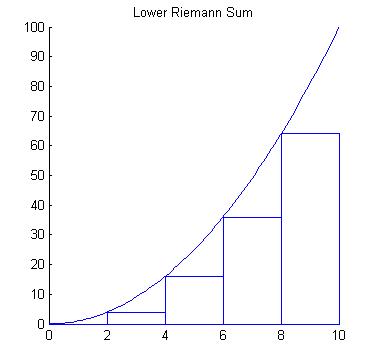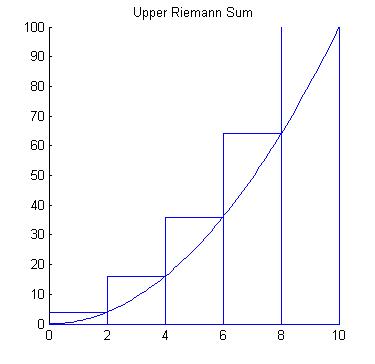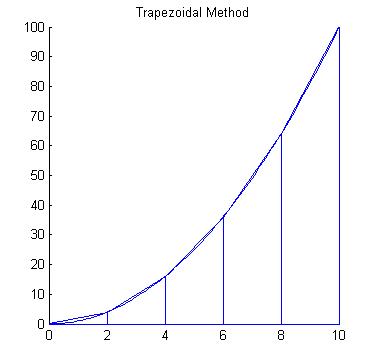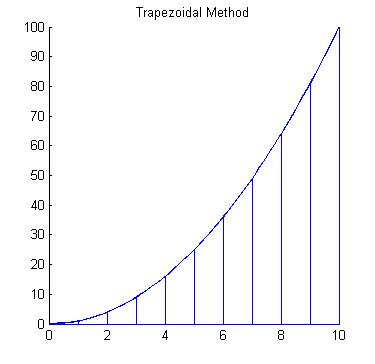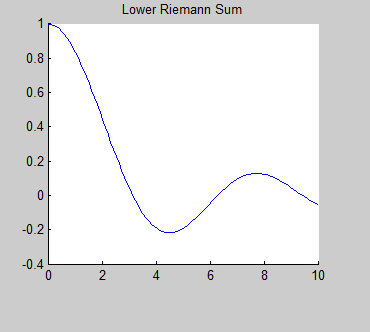
HistoryBernhard Riemann (1826-1866) was a German mathematician who was credited with some of the most important developments in modern mathematics. One operation that bears his name is the Riemann Integral. What is an Integral?An integral is the mathematical term for the area associated with a function. There are different types of integrals, but the simplest type of integral is called the Riemann integral. The Reimann integral represents the area between the graph of a function and the x-axis. So, we will investigate some strategies for finding this area. |
 |
![Integral of f(x)=x^2 on [0,10]](Int_x2.jpg)
